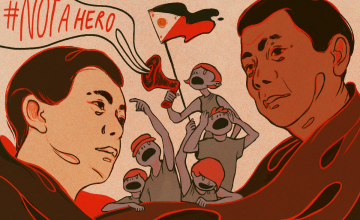Spoiler alert: It seems the government doesn’t have its priorities in check.
The now-defunded project called “Nationwide Operational Assessment of Hazard” or NOAH, a risk reduction management program of the Department of Science and Technology, could have helped us more than ever in this typhoon season.
Since 2017, Project NOAH, housed in the University of the Philippines National Institute of Geological Sciences in Diliman, Quezon City, has been halted because of lack of government funding and support. What could have been a great source of advanced tools and data to mitigate risks posed by natural calamities had been set aside. Meanwhile, the military and police get inordinately large sums of intelligence funds which are spent with almost no trace nor accountability.
Could they have saved more lives, livelihood and infrastructure if they had been allocated for disaster management projects?
Project NOAH originally had eight major components:
- Distribution of hydrometeorological devices in hard-hit areas in the Philippines
- Disaster Risk Exposure Assessment for Mitigation–Light Detection and Ranging (DREAM-LIDAR) Project
- Enhancing geohazards mapping through LIDAR
- Coastal Hazards and Storm Surge Assessment and Mitigation
- Flood Information Network Project
- Local Development of Doppler Radar Systems
- Landslide sensors development project
- Weather Hazard Information Project
The project envisions “A disaster-free Philippines with communities that are empowered with open access to accurate, reliable, relevant, and timely hazard and risk information.”
All this should be enough to hold persons in power accountable. We shouldn’t have to rely on “bayanihan spirit” or “Filipino resilience.”
By defunding NOAH three years ago, the government diminished the importance of science and technology as a viable resource in times of emergency. Even worse, the current administration reduced the calamity fund by P4 billion for the year, far less than the budget allocated to the NDRRMC by the past administration.
Could they have saved more lives, livelihood and infrastructure if they had been allocated for disaster management projects?
As the effects of Super Typhoon Rolly, which hit several parts of the country especially Cagayan, Southern Luzon and Bicol, were being widely recorded across social media platforms under #RescuePH, individuals and private groups initiated and organized rescue and donation drives to help the most vulnerable. But what about government funds, what about our taxes, people have been asking. Could they have saved more lives, livelihood and infrastructure if they had been allocated for disaster management projects?
All this should be enough to hold persons in power accountable. We shouldn’t have to rely on “bayanihan spirit” or “Filipino resilience.”
If we keep doing so, we’re just covering up our government’s incompetence during emergency situations like Typhoon Ulyssess.
Read more:
Nadine calls out “Filipino resilience”—and so should you
How you can help rebuild the only art riso-print studio in Manila
Here’s how young folks can help in #RollyPH relief
Photo from Inquirer.net























Comments